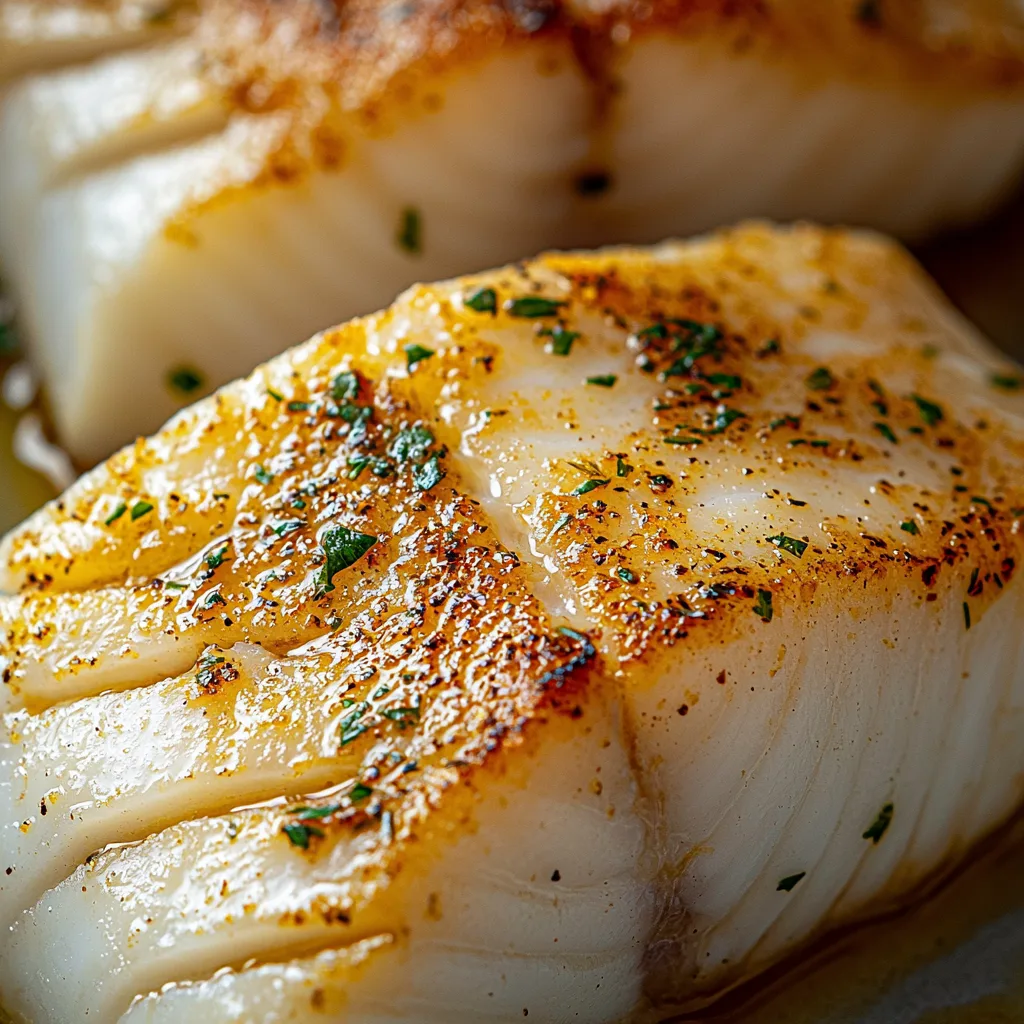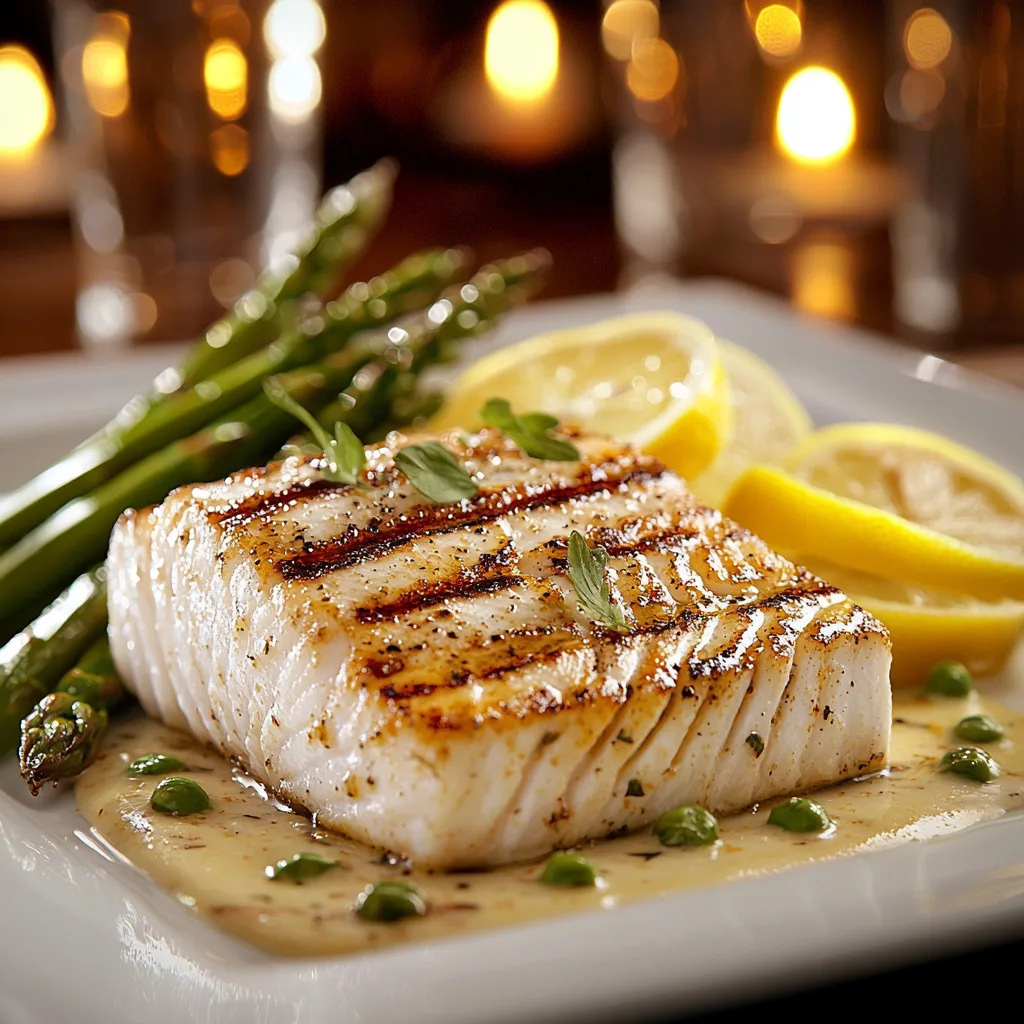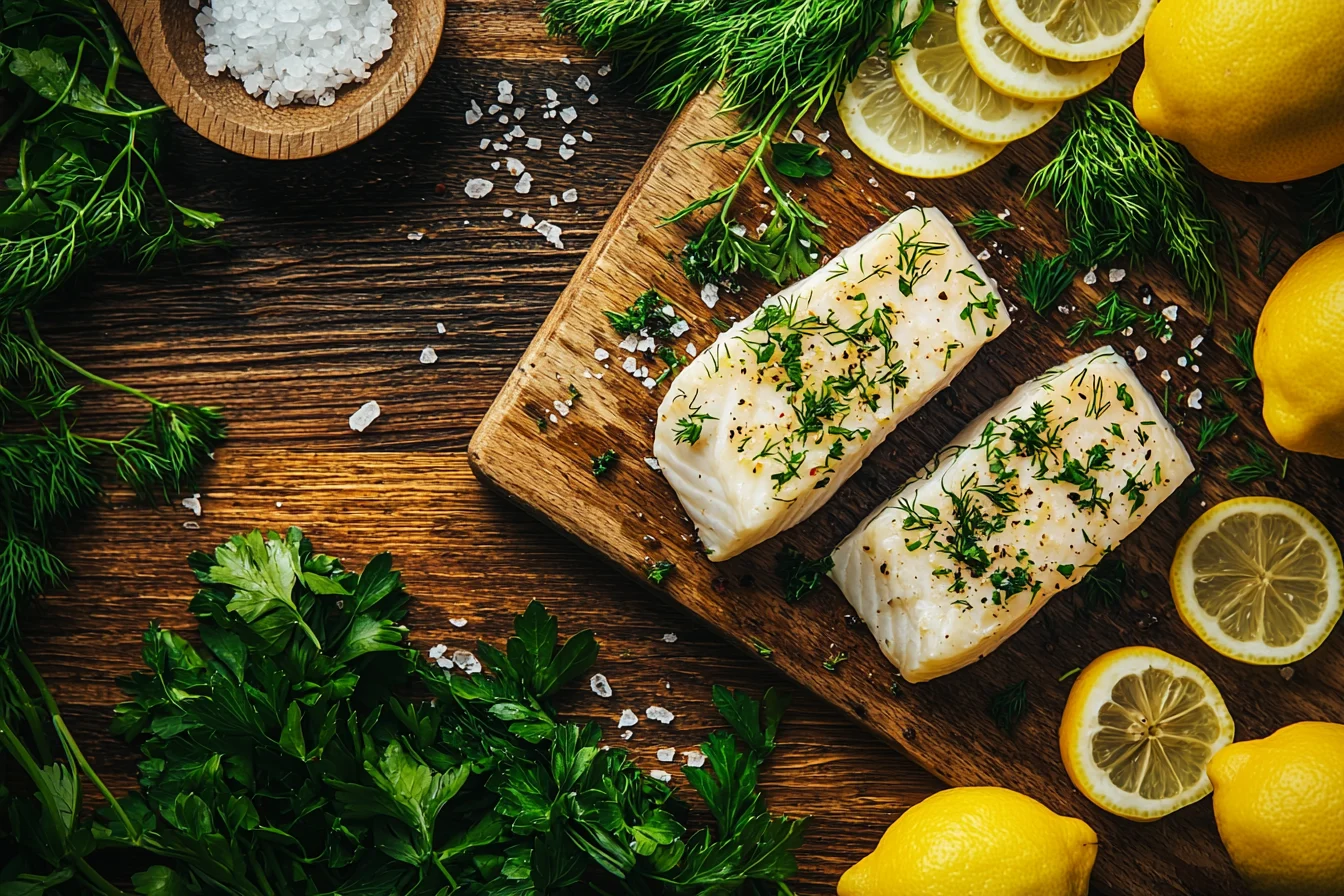If you’ve ever wondered about this popular fish, you’re not alone! Halibut is a favorite in kitchens worldwide, known for its firm texture and mild flavor. First, it’s incredibly versatile, fitting perfectly in everything from grilled fillets to hearty stews. Also, halibut is packed with lean protein and essential nutrients, making it a healthy choice for many meals. Then, its delicate taste allows it to pair beautifully with a variety of seasonings and sides. In addition, cooking halibut is straightforward, whether you’re a beginner or an experienced chef. It’s like having a blank canvas for endless culinary creativity. So, whether you’re planning a special dinner or a quick weeknight meal, halibut has something to offer. Next, let’s dive into the world of halibut meat, from its texture to its nutritional value. Keep reading—you’re about to discover why this fish deserves a spot on your plate!
Table of Contents
The Taste and Texture of Halibut Meat Explained
Understanding the Texture of Halibut Meat
Halibut is prized for its firm yet tender texture, making it a favorite in many kitchens. First, its dense meat holds up well when grilled, pan-seared, or baked. Also, it maintains its structure even with bold marinades and rich sauces. Then, its large, satisfying flakes set it apart from other white fish, offering a hearty bite. In addition, halibut absorbs seasonings beautifully, enhancing every dish with rich flavors. Next, it remains moist and juicy when cooked properly, ensuring a delicious meal every time. Its versatility in texture allows chefs to use it in everything from light summer dishes to hearty winter meals. For more scientific insights and detailed information about Pacific halibut, check out the official guide by NOAA Fisheries. If you’ve ever wondered what kind of meat is halibut?, its texture speaks volumes about its quality and appeal.

Why Halibut’s Mild Flavor Makes it a Seafood Favorite
Halibut’s mild flavor is one of its standout qualities, loved by seafood fans worldwide. First, it has a clean, slightly sweet taste that pairs well with many seasonings. Also, this mildness makes it an excellent choice for various recipes, from light salads to hearty tacos. Then, its subtle flavor allows spices, herbs, and sauces to shine without being overpowered. In addition, halibut’s versatility makes it perfect for bold marinades or simple lemon and butter seasoning. Next, its flavor appeals to people who aren’t fans of overly fishy-tasting seafood. Also, it’s a great option for introducing seafood to kids or picky eaters. Halibut’s mildness makes it easy to experiment with different flavors and cooking styles. Whether you prefer zesty citrus marinades or bold spice rubs, halibut adapts beautifully. If you’ve ever wondered what kind of meat is halibut?, its flavor is one reason it’s a top choice.
Nutritional Value of Halibut Meat: Key Benefits
Protein and Omega-3 Benefits of Halibut Meat
Halibut is not just delicious—it’s also packed with valuable nutrients. First, it’s an excellent source of lean protein, which supports muscle growth and repair. Also, protein keeps you full longer, making halibut a satisfying meal option. Then, halibut is rich in omega-3 fatty acids, which are known for promoting heart and brain health. In addition, these healthy fats can help reduce inflammation and improve overall well-being. Next, omega-3 fatty acids are linked to better mood regulation and improved focus. Also, halibut’s high protein content makes it a great choice for people focused on fitness and health. Whether grilled, pan-seared, or baked, halibut delivers essential nutrients in every bite. With its balanced nutritional profile, halibut fits perfectly into a healthy diet. So, if you’ve been curious about what kind of meat is halibut?, know that it’s not only tasty but also incredibly nutritious.
Essential Vitamins and Minerals in Halibut Meat
Halibut isn’t just about protein and omega-3—it’s also packed with essential vitamins and minerals. First, it’s an excellent source of vitamin B12, which supports energy production and nerve function. Also, it contains important minerals like magnesium, selenium, and potassium. Then, these nutrients contribute to bone health, improved immunity, and balanced electrolytes. In addition, selenium acts as an antioxidant, helping protect your body from cell damage. Next, potassium helps regulate blood pressure and supports heart health. Also, magnesium plays a role in muscle relaxation and overall energy production. Halibut’s impressive nutritional profile makes it a well-rounded addition to your meals. Whether you enjoy it grilled, baked, or pan-seared, you’re getting a powerhouse of essential nutrients. Now that you know what kind of meat is halibut?, it’s clear that it’s not just delicious—it’s a healthy choice too.
Popular Cooking Methods for Halibut Meat
Grilling Techniques for Perfect Halibut Meat Fillets
Grilling halibut is one of the best ways to highlight its firm texture and mild flavor. First, the grill adds a smoky aroma that enhances every bite. Also, halibut’s firm texture ensures it stays intact over high heat. Then, brushing the fillets with olive oil prevents sticking and adds a light, savory flavor. In addition, grilling locks in moisture, keeping the meat tender and juicy. Next, using a marinade with citrus or herbs can add layers of flavor. Also, grilling halibut doesn’t require much effort, making it perfect for outdoor gatherings. The results are impressive every time—flaky, moist fillets with charred grill marks. Whether served with fresh salsa or creamy sauce, grilled halibut is always a winner. If you’ve ever asked yourself what kind of meat is halibut?, grilling it will quickly make you a fan.

Pan-Searing Halibut Meat for a Crispy Finish
Pan-searing halibut is a fantastic way to highlight its flavor and texture. First, it creates a crispy, golden crust while keeping the inside tender and flaky. Also, the quick cooking process helps retain halibut’s natural flavors. Then, using butter or olive oil enhances its richness and adds caramelization. In addition, pan-searing allows you to season the fillet directly in the pan, locking in every bit of flavor. Next, the high heat ensures a perfect sear in minutes. This method works well for both thick and thin fillets. The result is a restaurant-quality dish that’s surprisingly easy to make at home. Whether paired with fresh vegetables or creamy sauce, pan-seared halibut always impresses. Ready to cook with halibut? Start with this delicious Halibut Taco Recipe and bring out the best in this incredible fish. If you’ve wondered what kind of meat is halibut?, pan-searing is the perfect introduction.
Common Uses of Halibut Meat in Culinary Dishes
Halibut Meat in Gourmet Recipes and Fine Dining
Halibut is a popular choice in gourmet kitchens worldwide, and for good reason. First, its firm texture and mild flavor make it incredibly versatile for high-end dishes. Also, it pairs beautifully with elegant sauces, fresh herbs, and seasonal vegetables. Then, chefs often use halibut in pan-seared fillets, seafood risottos, or delicate ceviche. In addition, its ability to hold shape during cooking makes it a reliable choice for intricate presentations. Next, halibut is often featured in upscale dining menus as the star ingredient. Also, its clean taste allows creative sauces like beurre blanc or citrus reductions to shine. Whether grilled, steamed, or roasted, halibut adapts effortlessly to refined culinary techniques. Its rich protein content and delicate flavor profile elevate every dish. If you’ve ever wondered what kind of meat is halibut?, fine dining offers the perfect stage to experience its potential.
Everyday Halibut Meat Meals for Home Cooking
Halibut isn’t just for upscale dining—it’s equally perfect for home-cooked meals. First, its mild flavor makes it a family favorite. Also, it shines in quick recipes like fish tacos or baked fillets. Then, its firm texture holds up in hearty stews without falling apart. In addition, halibut pairs beautifully with staples like lemon, butter, and garlic. Next, it can be baked, grilled, or pan-seared in under 20 minutes. Also, its versatility allows for experimenting with different seasonings. Whether for a casual dinner or special occasion, halibut delivers every time. Its subtle sweetness and flaky texture make every bite delicious. For more seafood tips, check out What’s the Best Fish for Tacos? and discover exciting recipe ideas. If you’ve wondered what kind of meat is halibut?, start with an easy home-cooked meal—it’s sure to impress!
Tips for Choosing and Storing Halibut Meat
How to Identify Fresh Halibut Meat at the Market
Choosing fresh halibut is essential for the best cooking results. First, look for fillets with firm, glossy flesh and a slightly translucent appearance. Also, fresh halibut should have a mild, clean smell—never overly fishy. Then, avoid fillets with dull or discolored patches, as these are signs of poor quality. In addition, the flesh should spring back when lightly pressed. Next, check for consistent color across the fillet, usually white with a slight sheen. Also, if buying whole halibut, clear and bright eyes are indicators of freshness. Trust your senses; fresh fish should smell like the ocean, not ammonia. Halibut is often sold fresh or frozen, so frozen options can be just as good if properly handled. Whether at a fish market or grocery store, freshness makes all the difference. If you’re asking what kind of meat is halibut?, fresh quality guarantees the best experience.
Proper Storage Techniques for Halibut Meat
Proper storage keeps halibut fresh and safe to eat. First, if you plan to use fresh halibut within a day or two, store it in the coldest part of your refrigerator. Also, wrap the fillets tightly in plastic wrap or place them in an airtight container. Then, for longer storage, freezing is the best option. In addition, ensure the fish is vacuum-sealed or wrapped in freezer-safe packaging to prevent freezer burn. Next, always label the package with the date of freezing to track freshness. Also, frozen halibut can stay fresh for up to six months if stored properly. When thawing, do it slowly in the refrigerator overnight rather than at room temperature. This prevents texture loss and maintains flavor. Proper storage keeps your halibut delicious and ready for any recipe. If you’ve been curious about what kind of meat is halibut?, good storage ensures it stays top-quality every time.
Mistakes to Avoid When Cooking Halibut Meat
Preventing Overcooked and Dry Halibut Meat
Overcooking is one of the most common mistakes people make with halibut. First, halibut has a lean, firm texture that can become dry if cooked too long. Also, it’s best to use quick cooking methods like pan-searing, grilling, or baking. Then, monitor the internal temperature—it should reach 130°F to 135°F for perfect doneness. In addition, remove halibut from the heat just before it’s fully cooked, as it will continue cooking from residual heat. Next, avoid cooking halibut on high heat for extended periods. Also, using a meat thermometer helps ensure accuracy and prevents guesswork. If you notice the fillet starting to flake apart too much, it’s likely overdone. Proper timing and temperature are key to keeping halibut moist and flavorful. If you’ve been asking what kind of meat is halibut?, know that careful cooking makes all the difference in texture.
Common Missteps in Halibut Meat Preparation
Preparing halibut might seem straightforward, but a few common mistakes can affect the outcome. First, avoid using too much seasoning, as halibut’s mild flavor can easily be overwhelmed. Also, skipping the preheating step can result in uneven cooking. Then, improper thawing—like leaving frozen fillets on the counter—can ruin texture and flavor. In addition, always pat halibut fillets dry with a paper towel before cooking. Next, overcrowding the pan or grill can cause uneven heat distribution, leading to inconsistent results. Also, using low-quality cookware can make it harder to achieve the perfect sear. Pay attention to small details, as they make a big difference in the final dish. Cooking halibut doesn’t require fancy techniques—just a little care and attention. If you’ve been wondering what kind of meat is halibut?, avoiding these mistakes ensures every bite is delicious.
Frequently Asked Questions (FAQs)
Is halibut a good fish to eat?
Halibut is an excellent fish to eat, offering both great taste and impressive nutrition. First, it’s rich in lean protein, which helps with muscle growth and keeps you full longer. Also, it’s packed with omega-3 fatty acids, supporting heart and brain health. Then, halibut contains essential vitamins like B12 and minerals like magnesium and selenium. In addition, its mild flavor and firm texture make it perfect for grilling, baking, or pan-searing. Next, halibut pairs beautifully with various seasonings and sauces. If you’ve ever wondered what kind of meat is halibut?, it’s both nutritious and delicious.
Which is better, cod or halibut?
Choosing between cod and halibut depends on your preference and recipe. First, halibut has a firm texture that holds up well when grilled or pan-seared. Also, its mild flavor pairs nicely with bold marinades or sauces. Then, cod has a flakier texture and a lighter, more delicate taste. In addition, cod is often more affordable and widely available in stores. Next, halibut feels meatier, while cod offers a softer bite. Both fish are rich in protein and nutrients, making them excellent choices. If you’ve been curious about what kind of meat is halibut?, it’s a premium and hearty option.
What class of fish is halibut?
Halibut belongs to the flatfish family, specifically the Pleuronectidae family. First, it’s one of the largest flatfish species, known for its diamond-shaped body. Also, both eyes are located on one side of its head, which is unique to flatfish. Then, halibut thrive in cold waters, primarily in the North Pacific and North Atlantic oceans. In addition, these fish live near the ocean floor, blending into sandy seabeds for camouflage. Next, halibut’s firm, white meat makes it a prized choice in seafood cuisine. If you’ve wondered what kind of meat is halibut?, it’s a flatfish with exceptional culinary appeal.
What does halibut fish taste like?
Halibut has a mild, slightly sweet flavor that many people enjoy. First, it’s not overly fishy, making it perfect for seafood beginners. Also, its subtle sweetness pairs beautifully with herbs, citrus, and butter-based sauces. Then, halibut’s firm texture adds a satisfying bite to every dish. In addition, it absorbs marinades and seasonings well, enhancing its natural flavor. Next, it works well in everything from light salads to hearty stews. Also, its versatility allows it to shine whether grilled, fried, or baked. If you’ve been asking what kind of meat is halibut?, its clean flavor is a favorite.
The Final Word on Enjoying Halibut in Your Next Dish!
Halibut is a seafood favorite for good reason—it’s delicious, versatile, and packed with nutrients. First, its firm texture holds up beautifully to grilling, frying, or baking. Also, its mild flavor pairs well with a variety of seasonings, from zesty citrus to bold spice rubs. Then, halibut’s impressive nutritional profile adds to its appeal, offering protein, omega-3s, and essential vitamins. In addition, it’s equally at home in gourmet recipes or quick weeknight meals. Whether you’re an experienced chef or a home cook, halibut is an easy fish to master. Next, with proper storage and simple cooking techniques, every halibut dish can shine. Also, avoiding common mistakes will ensure your results are consistently delicious. So, if you’ve been asking what kind of meat is halibut?, now you know—it’s a seafood superstar. Try cooking with halibut today and savor every flavorful bite!

